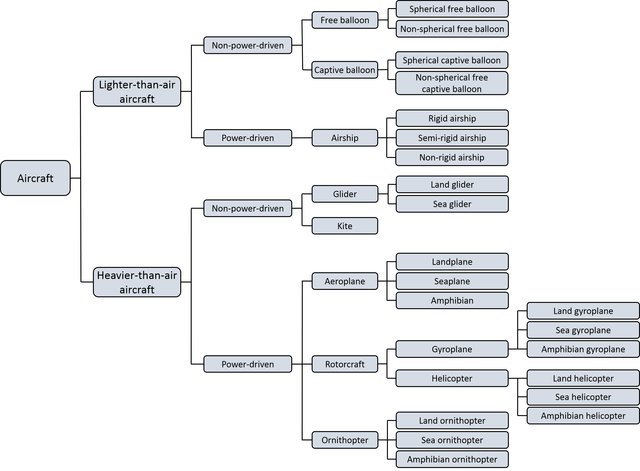Chapter 3 Volume 2
3.1 Airworthiness
The Airworthiness standards of Annex 8 of the Chicago Convention are related to the Standards of Annex 6, Part I dealing with aeroplane performance operating limitations.
An element of the safety of an operation is the instrinsic safety of the aircraft. That is the level of its airworthiness. The level of airworthiness of an aircraft is not fully defined by the application of the Airworthiness Standards of Annex 8, but also requires the application of the Standards of Annex 6. We can say that Annex 8 deals with airworthiness from the engineering point of view, whereas Annex 6 deals with the safety standards necessary for any operation.
The Standards of Airworthiness, detailed in Annex 8 Part 3 are applicable to aeroplanes with a MTOM of more than 5.700kg and which are intended for the transport of passengers, cargo or mail in international air transport. Unless specifically exempted, the standards apply to the complete aeroplane including power units, systems and equipment.
For European Union: EASA has established applicable airworthiness standards.
diagram of regulation/airworthiness organisation
3.2 Certificate of Airworthiness - ICAO Annex 8 Chapter 3
issued by the State of registration when satisfactory evidence is provided that the aeroplane complies with the appropriate airworthiness requirements.
aircraft with valid CA of another state register of another state, the new state of registry may consider CA as evidence in whole or in part when issuing another CA or rendering original CA valid
validity of authorisation shall not be extended beyond validity of CA (?) (what authorisation?)
Standard Form (ICAO)
nationality and registration marks
manufacturer and manufacturer’s designation of aircraft
aircraft serial number
categories (?)
date/signature
(periodic endoresement)
3.3 Continuing Airworthiness - ICAO Annex 8 Chapter 4
The state of registry is responsible for determining if an aircraft continues to be airworthy. The state is required to maintain a system for recording faults, malfunctions, defects or other occurrences which might affect the airworthiness of aircraft of more than 5.700kg MTOM.
The State of Registry shall ensure that in respect of aeroplanes of over 5.700 kg and helicopters over 3.180 kg maximum certificated take-off mass, there exists a system whereby information on faults, malfunctions, defects and other occurrences that cause or might cause adverse effects on the continuing airworthiness of the aircraft is transmitted to the organization responsible for the type design of that aircraft.
The State of Design shall ensure that in respect of aeroplanes over 5 700 kg maximum certificated take-off mass, there exists a continuing structural integrity programme to ensure the airworthiness of the aeroplane. The programme shall include specific information concerning corrosion prevention and control
The State of Design of an aircraft shall transmit any generally applicable information which it has found necessary for the continuing airworthiness of the aircraft and for the safe operation of the aircraft to to every Contracting State which has advised the State of Design that it has entered the aircraft on its register.
Each Contracting State shall establish, in respect of aeroplanes over 5.700 kg and helicopters over 3.180 kg maximum certificated take-off mass, the type of service information that is to be reported to its airworthiness authority by operators, organizations responsible for type design and maintenance organizations. Procedures for reporting this information shall also be established.
3.4 Validity of Airworthiness Certificate
CA will be renewed or remain valid provided that continued airworthiness has been determined by periodic inspection.
Inspection period dependent on service, elapsed period and system established by State.
Damaged aircraft: state of registry to judge whether damage impair airworthiness (no longer airworthy).
3.5 Aircraft limitations and information
Each aircraft is required to have a flight manual or other means in which the approved limitations are defined and additional information is contained necessary for the safe operation of the aeroplane.
3.6 Aircraft Nationality and Registration Marks
ICAO Paris Convention 1919 requires all aircraft to be registered and carry nationality mark and registration mark.
Annex 7 of Chicago Convention: aircraft nationality and registration marks. = standards (no recommendation == MUST).
Exemption from registration may be granted temporarily from the appropriate authority for test flying or historic aircraft.
The nationality or common mark and registration mark shall consist of a group of characters. The nationality or common mark shall precede the registration mark. When the first character of the registration mark is a letter it shall be preceded by a hyphen.
D-EAIP, OO-JMC
registration marks shall not use letters: 5 letter combinations used in International Code of Signals, Part II (? never heard of this), 3-letter Q-codes, distress signal SOS, other urgency signals, e.g. XXX, PAN, TTT.
Registration & nationality marks = painted on aircraft of affixed by other means ensuring permanence. Marks shall be kept clean and visible at all times.
3.7 Register of Nationality, Common and Registration Marks
Each Contracting State or common mark registering authority shall maintain a current register showing for each aircraft registered by that State or common mark registering authority, the information recorded in the certificate of registration.
The register of unmanned free balloons shall contain the date, time and location of release, the type of balloon and the name of the operator.
3.8 Certificate of Registration
The Nationality or Common mark
The registration mark
The manufacturer’s designation of the aircraft
The serial number of the aircraft
The name and address of the owner
A certificate that it has been entered on the register of the State
The dated signature of the registering officer
The certificate is to be carried in the aircraft at all times
3.9 Identification Plate
An aircraft shall carry an identification plate inscribed with at least its nationality or common mark and registration mark.
fireproof/fireproofed material, affixed in prominent place/near entrance;
in case of unmanned free balloon affixed conspicuously to the exterior of the payload.
